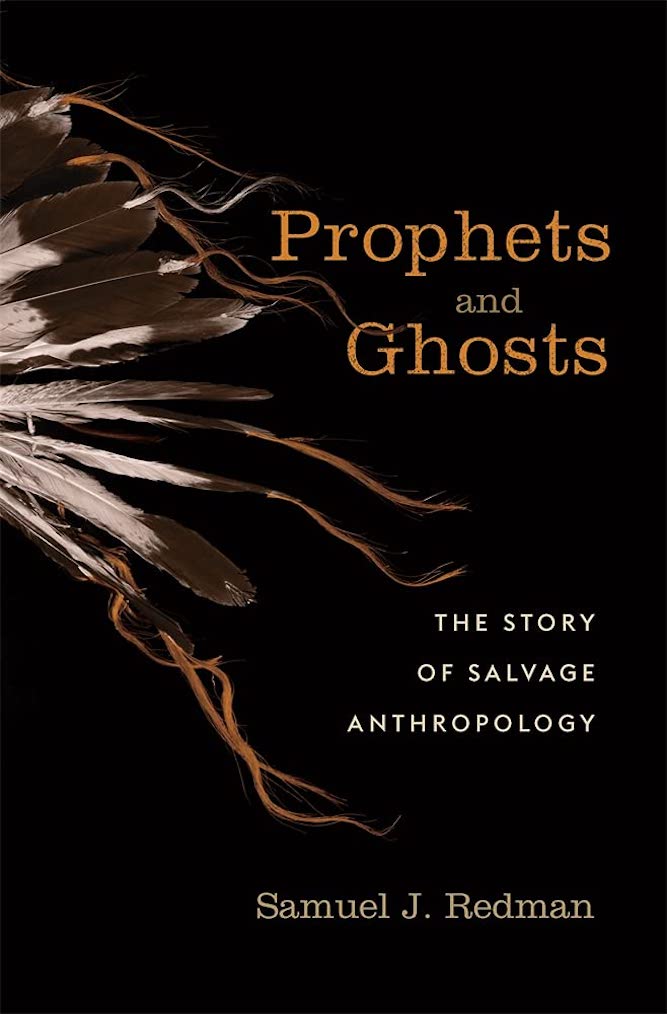
サルベージ・アンソロポジー/サルベージ人類学
Salvage anthropology, 救出人類学 ; サルベージ民族学

☆ サルベージ人類学(Salvage Anthropology)とは、サルベージ民族学(Salvage Ethnography)と関連する用語で、文化的衰退が推測される中で収集や記録を行うことを指す。19世紀後半から20世紀初頭にかけて、サルベージ 人類学は音楽、物質文化、骨学などに関心を持つあらゆる種類のコレクターに影響を与えた。サルベージ人類学につながる考え方は、さまざまな出版物や人気の 展覧会を通じて、文化について書かれ、記録される方法に影響を与えた。サルベージ人類学は、滅びる民族や人種を前に、さまざまな情報を仕入れておこうとい う名目のもとでおこなわれた、文化の収奪行為であり、人類学者や行政官が善意にほだされて行われたものではない。また、仮に、人類学者や行政官が、その文 化の記録を保有・保存しなければならないという「情熱」は、片方の手で破壊に加担し、片方の手でその喪失を嘆くという「帝国主義的ノスタルジー」によるも のであったと、現在では指摘されている。1960年代に遅まきながら「アクション人類学」や「アクションリサーチ」が登場したのは、そのようなサルベージ 人類学への(北米を中心とした)人類学界内部からの良心の現れであろう。もちろん、固有の文化や言語が失われつつある現在でも、サルベージ人類学を臆目も なく実践する者は多く、特に日本の学会では[今なお]その傾向が顕著である。
| Salvage
anthropology, related to salvage ethnography, is a term referring to
the practice of collecting and documenting in the face of presumed
cultural decline. In the late nineteenth and early twentieth century,
salvage anthropology influenced collectors of all kinds, including
those interested in music, material culture, and osteology. Ideas
connected to salvage anthropology influenced how cultures were written
about and documented through a wide range of publications and popular
exhibitions. |
サルベージ人類学(Salvage
Anthropology)とは、サルベージ民族学(Salvage
Ethnography)と関連する用語で、文化的衰退が推測される中で収集や記録を行うことを指す。19世紀後半から20世紀初頭にかけて、サルベージ
人類学は音楽、物質文化、骨学などに関心を持つあらゆる種類のコレクターに影響を与えた。サルベージ人類学につながる考え方は、さまざまな出版物や人気の
展覧会を通じて、文化について書かれ、記録される方法に影響を与えた。 |
| Origins of Term When the term was coined in the 1960s, it referred mainly to archeological efforts to find cultural information before an area was obliterated by the construction of reservoirs, power plants, or roads, or before land was leveled for irrigation.[1] These projects were often conducted under time restrictions, based on when the area was slated for destruction.[1] Despite the origins of the term, "salvage anthropology" is most frequently used to describe Euro-American attempts to “preserve” American Indian culture in the 19th and 20th centuries. While the term "salvage anthropology" did not emerge until later, a widespread belief in the eventual extinction of Indigenous societies drove widespread efforts to document, record, and collect.[citation needed] |
用語の起源 1960年代にこの言葉が作られたとき、主に貯水池、発電所、道路の建設によって地域が消滅する前、あるいは灌漑のために土地が平らにされる前に文化的情 報を発見する考古学的な取り組みを指していた[1]。これらのプロジェクトは、その地域がいつ破壊される予定なのかという時間的制約のもとで行われること が多かった[1]。 この用語の起源にもかかわらず、「サルベージ人類学」は19世紀と20世紀におけるアメリカン・インディアンの文化を「保存」しようとするヨーロッパ系ア メリカ人の試みを説明するために最も頻繁に使用されている。「サルベージ人類学」という用語が登場したのはもっと後のことだが、先住民社会が最終的に絶滅 するという信念が広まったことで、文書化、記録、収集の取り組みが広く行われるようになった[要出典]。 |
| Vanishing Race Theory Beginning in the Jacksonian Era, many Americans subscribed to the belief that American Indians were "vanishing". Despite the fact that governmental actions, including the forced removal of the Cherokee from Georgia via the Trail of Tears, had much to do with the declining population of American Indians in the Eastern United States, leading American thinkers shifted the causes of “disappearance” to the Indians’ own destiny to give way to whites.[2] In addition to the belief that American Indians would physically vanish due to forced migration, disease, and war, Americans also held the belief that Indians would "culturally" vanish through contact with whites and forced assimilation.[3] Because of this belief, Euro-Americans took on the responsibility of externally preserving the cultural memory and traditions of American Indians, particularly through collecting tribal objects. |
消えゆく人種説 ジャクソニアン時代から、多くのアメリカ人がアメリカ・インディアンは「消滅しつつある」という信念を支持していた。アメリカ東部のアメリカ・インディア ンの人口減少には、涙の道(Trail of Tears)を通じてジョージア州からチェロキー族を強制移住させるなど、政府の行動が大きく関係していたにもかかわらず、アメリカの代表的な思想家たち は、「消滅」の原因を、白人に道を譲るというインディアン自身の運命に転嫁した。 [2]アメリカ人は、強制移住、病気、戦争によってアメリカ・インディアンが物理的に消滅するという信念に加えて、白人との接触や強制的な同化によってイ ンディアンが「文化的に」消滅するという信念も抱いていた[3]。この信念のために、ヨーロッパ系アメリカ人は、特に部族の品々を収集することによって、 アメリカ・インディアンの文化的記憶や伝統を外部に保存する責任を負った。 |
| Changing Meanings of Artifacts Since American Indians were erroneously thought to be going extinct, white American anthropologists did not trust them to preserve their own traditions within their communities and began an effort in the late nineteenth century to dispossess communities of spiritual and other items, which would be transplanted into museums. As Euro-Americans removed sacred objects from their communities, they placed spiritual items into an educational context. Although the collectors believed they were using these objects to showcase the memory of a “vanishing” people, the objects were taken from actual people, many of whom believed that public display was disrespectful and potentially harmful to viewers.[4] Many American Indians also believed that exhibiting sacred objects stripped the items of their spiritual power.[5] By creating new meanings for the objects on display, in attempts to externally preserve a culture, anthropologists and collectors diminished the meaning that items held for the people who had created them. |
人工物の意味の変化 アメリカン・インディアンは絶滅すると誤って考えられていたため、アメリカ白人の人類学者たちは、彼らが自分たちのコミュニティの中で自分たちの伝統を守 ることを信用せず、19世紀後半から、コミュニティから精神的な品々やその他の品々を奪い取り、博物館に移植する努力を始めた。ヨーロッパ系アメリカ人は 自分たちのコミュニティから神聖な品々を取り除くと同時に、精神的な品々を教育的な文脈に置き換えた。多くのアメリカン・インディアンもまた、神聖な品々 を展示することは、その品々から精神的な力を奪うと信じていた[5]。 文化を外部に保存しようとする試みの中で、人類学者や収集家たちは、展示された品々に新たな意味を持たせることで、その品々を創造した人々にとってその品 々が持っていた意味を弱めていった。 |
| Collection Methods Nineteenth- and early-twentieth century salvage anthropology often was undertaken through disrespectful and disingenuous methods. Archeologists often removed artifacts and human remains from grave sites, paying little attention to whether they were actively being used to bury relatives of tribe members.[5] As archeologists and anthropologists scrambled to preserve a “disappearing” culture, they disrupted memorialization of relatives and ancestors. By the late 1980s, it was estimated that museums, other institutions and private collectors possessed between 300,000 and 2.5 million bodies of American Indians.[6] Many objects were also obtained without the consent of their owners. Alanson Buck Skinner, who collected for the American Museum of Natural History from 1910 to 1914, was known as “The Little Weasel,” because of his collection techniques. Skinner used deception to acquire objects from the Menomini, claiming that the objects would be held in a “sacred place” with many other Menomini objects.[3] By thus removing objects from native cultures, American anthropologists took on the power to interpret and create narratives for the objects, rather than allowing them to remain part of Native cultural memory. [6] Weaver, Jace (1997). "Indian Presence with No Indians Present: NAGPRA and Its Discontents". Wíčazo Ša Review. 12 (2): 13–30. doi:10.2307/1409204. JSTOR 1409204. |
収集方法 19世紀から20世紀初頭にかけてのサルベージ人類学は、しばしば無礼で不誠実な方法で行われていた。考古学者や人類学者は「消滅しつつある」文化を保存 しようと躍起になる一方で、親族や祖先の追悼を妨害した。1980年代後半までに、 博物館やその他の機関、個人収集家がアメリカン・インディアンの遺体を30万体から250万体所有していると推定された[6]。1910年 から1914年までアメリカ自然史博物館のために収集したアランソン・バック・スキナーは、その収集手法から「小さなイタチ」として知られていた。スキ ナーはメノミニ族から品物を入手する際、その品物が他の多くのメノミニ族の品物と一緒に「神聖な場所」に保管されると主張し、欺瞞を用いた[3]。こうし て先住民の文化から品物を取り除くことで、アメリカの人類学者は、品物が先住民の文化的記憶の一部であり続けることを許すのではなく、品物を解釈し、物語 を作り出す力を手に入れたのである。 [6] Weaver, Jace (1997). "Indian Presence with No Indians Present: NAGPRA and Its Discontents". Wíčazo Ša Review. 12 (2): 13–30. doi:10.2307/1409204. JSTOR 1409204 |
| https://en.wikipedia.org/wiki/Salvage_anthropology |
|
| The focus of some of Lowie's work was salvage ethnography, the rapid collection of data from cultures close to extinction. | ロバート・ハリー・ローウィの
研究は、滅びゆく先住民を前に、なるべく短期間に大量にデータを採集しようという、サルベージ民族誌というスタイルをとった( "The focus
of some of Lowie's work was salvage ethnography, the rapid collection
of data from cultures close to extinction.")。 |
リ ンク
文 献
そ の他の情報
Copyleft, CC, Mitzub'ixi Quq Chi'j, 1996-2099
☆
 ☆
☆